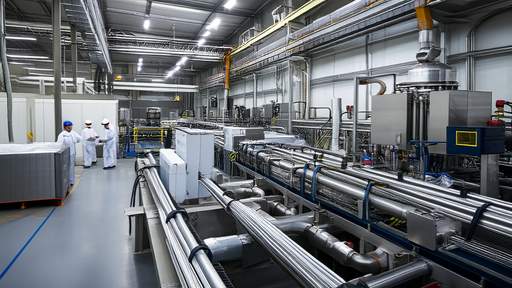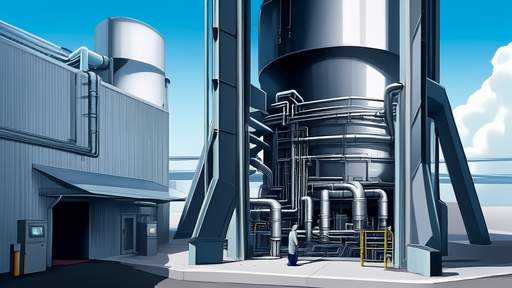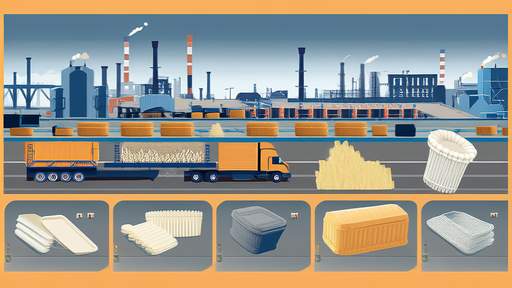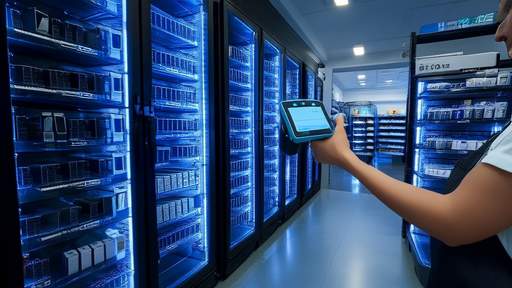The race to commercialize solid-state batteries has entered a pivotal phase as major manufacturers scramble to retrofit existing production lines for mass-scale output. What began as laboratory breakthroughs is now colliding with the gritty realities of industrial manufacturing. Across Asia, Europe, and North America, factory floors echo with the sounds of wrench crews dismantling old lithium-ion equipment while engineers debate the merits of atmospheric dry rooms versus solvent-free electrode processing.
Retrofitting existing battery plants presents both economic advantages and engineering nightmares. Unlike greenfield facilities that can be designed around solid-state specifications, converted production lines must accommodate unfamiliar chemistries and architectures within the spatial constraints of buildings originally meant for conventional lithium-ion batteries. The most visible changes involve replacing slurry-based electrode coating systems with physical vapor deposition (PVD) machines for thin-film solid electrolytes - a switch that typically requires reinforcing factory floors to handle the substantial weight of vacuum chambers.
At the heart of the transformation lies the delicate solid electrolyte layer, typically measuring between 1-10 microns thick. Production veterans accustomed to handling liquid electrolytes now navigate the challenges of maintaining micrometer-level precision across football field-sized production areas. "We're essentially building semiconductor-grade cleanliness into what used to be a heavy industrial process," remarked a process engineer at a retrofitted facility in Nagoya, where workers now wear full bunny suits in humidity-controlled environments.
The anode production line undergoes the most radical surgery during conversion. Traditional graphite coating equipment gives way to lithium metal deposition systems, requiring not just new machinery but entirely new utility infrastructures. Some manufacturers opt for thermal evaporation systems while others implement plating technologies adapted from the semiconductor industry. Either approach demands extensive modifications to power supply systems and the installation of sophisticated moisture control systems - lithium metal's extreme reactivity with ambient humidity makes even brief exposure catastrophic.
Perhaps the most underestimated challenge involves the formation process - the final step where batteries undergo initial charge cycles. Solid-state cells require formation protocols radically different from their liquid electrolyte counterparts, with pressure application systems becoming as crucial as voltage control. Retrofitted lines often incorporate pneumatic pressing stations that maintain several atmospheres of pressure throughout the multi-day formation process, a requirement that has led some facilities to reinforce their ceilings to accommodate overhead press systems.
Material handling systems represent another pain point in production line conversions. The brittle nature of many solid electrolytes necessitates completely rethinking how components move between stations. Vibratory feeders and robotic pick-and-place systems common in lithium-ion plants get replaced with gentler, often custom-designed transport mechanisms. One German automaker's retrofit project reportedly spent €3 million developing ceramic end effectors for robots to handle ultrathin solid electrolyte sheets without micro fractures.
The industry appears divided on whether to pursue incremental retrofits or comprehensive overhauls. Some Asian manufacturers have adopted a modular approach, replacing individual lithium-ion process segments with solid-state compatible equipment while maintaining existing material flows. Western manufacturers tend toward more radical transformations, often stripping plants down to structural elements before rebuilding. Neither approach has proven clearly superior, though the modular method allows for faster production resumption after conversion.
Supply chain considerations further complicate retrofit projects. The exotic materials required for solid-state batteries - from lithium lanthanum zirconium oxide (LLZO) electrolytes to lithium-indium alloy anodes - demand new handling protocols and storage facilities. Many retrofit projects include construction of specialized warehousing with inert atmosphere capabilities, adding unexpected square footage requirements to facilities originally designed for conventional battery materials.
As the first wave of converted production lines comes online, unexpected bottlenecks continue to emerge. Throughput rates for some processes, particularly solid electrolyte layer fabrication, remain stubbornly below projections. Quality control has likewise proven more challenging than anticipated, with yield rates for some retrofitted lines languishing below 60% - unacceptable for automotive-grade production. These growing pains mirror the early days of lithium-ion manufacturing, suggesting that process refinement will continue for years after initial conversions are complete.
The workforce transformation accompanying these physical changes may ultimately prove as significant as the equipment upgrades. Veteran battery technicians find themselves relearning fundamental processes, while new hires increasingly come from semiconductor and pharmaceutical backgrounds rather than traditional battery industries. This shift in workforce composition is quietly reshaping manufacturing culture at retrofitted plants, bringing new perspectives to age-old production challenges.
With billions in investment dollars flowing toward production line conversions, the coming year will reveal whether these retrofitted facilities can deliver on solid-state batteries' long-promised potential. Early output from converted lines already powers limited vehicle fleets and consumer electronics, though at premium prices reflecting current production challenges. As engineers refine processes and work through teething problems, the industry watches closely - knowing that successful production line conversions could finally unlock the energy density and safety improvements that have made solid-state batteries the holy grail of energy storage.

By /Jun 3, 2025

By /Jun 3, 2025

By /Jun 3, 2025

By /Jun 3, 2025

By /Jun 3, 2025

By /Jun 3, 2025

By /Jun 3, 2025

By /Jun 3, 2025

By /Jun 3, 2025

By /Jun 3, 2025

By /Jun 3, 2025

By /Jun 3, 2025

By /Jun 3, 2025

By /Jun 3, 2025

By /Jun 3, 2025

By /Jun 3, 2025

By /Jun 3, 2025

By /Jun 3, 2025

By /Jun 3, 2025

By /Jun 3, 2025